5 of the Best Walks in Keswick
Surrounded by crags and fells on all sides and situated right on the edge of Derwentwater, there’s no shortage...
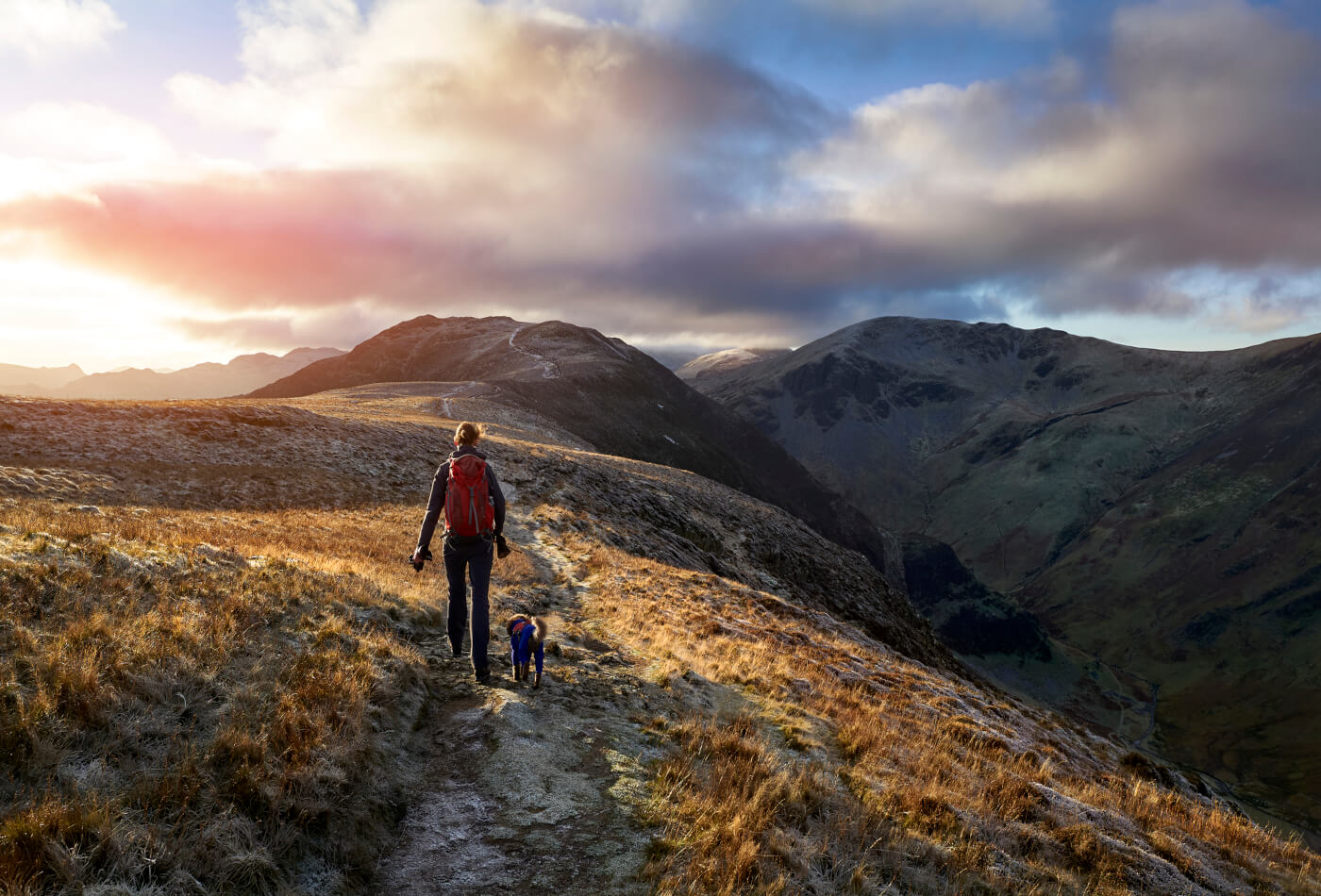
Renowned for its rugged landscape, it’s no surprise that these Lake District mountains are amongst some of the highest mountains in England.
Whether you’re in search of a challenging expedition or a leisurely hike to soak in the spectacular scenery, you’re sure to find your perfect peak here.
We’ve compiled a handy list containing 8 Lake District mountains that are worth the hike. Keep reading to learn more…
Use our quick links below to jump to your favourite Lake District mountain:
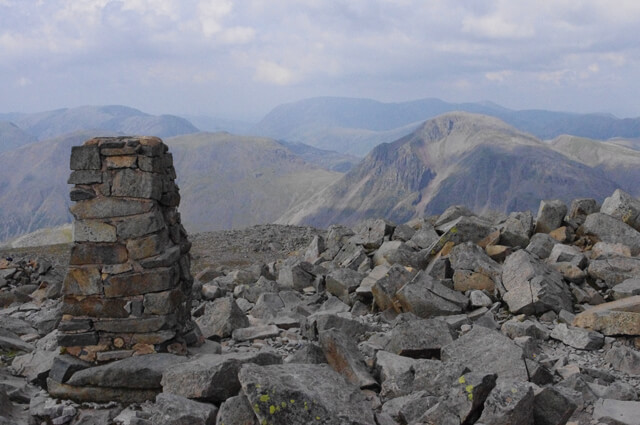
Our list wouldn’t be complete without a mention of Scafell Pike, one of our favourite things to do in the Lake District. Dominating the skyline of the National Park, this Lake District mountain sits at a staggering 978 metres tall.
Famed as the highest mountain in England, a hike up Scafell Pike is not for the faint of heart. Scafell Pike is a challenging and steep ascent that involves scrambling over rugged terrain. No matter the season, you may encounter high winds, rain, snow, freezing temperatures, or poor visibility. Preparation is essential — by planning ahead and following key safety tips, you can reduce the risk of getting lost or injured and enjoy an exhilarating and rewarding day on England’s highest peak.
367 metres shorter than Ben Nevis, the highest mountain in the UK, Scafell Pike forms the English leg of the National Three Peak Challenge.
There are a number of routes leading to the summit, each varying in difficulty and terrain, so a very good fitness level is definitely required.
The Wasdale Path is the most well-trodden, stretching 6 miles up and down.
Distance: 9.6km
Time: 3-4 hours
Height: 978 metres
Starting Point: Wasdale Head Car Park
Route Details: The Wasdale Path
Seasonal Advice: Summer offers the safest conditions for climbing Scafell Pike, as winter snow and fog can make the summit treacherous and navigation challenging.
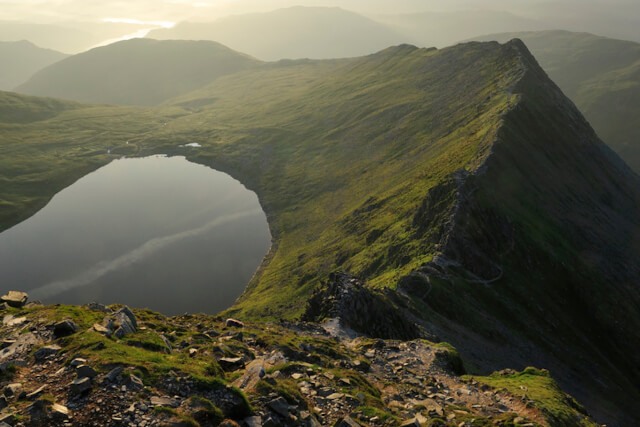
The third highest mountain in England, Helvellyn is one of the Lake District most popular walks. Considered a moderately difficult hike, this Lake District mountain may be better suited to the more seasoned climbers.
Thrill-seekers flock in their thousands to tackle the Striding Edge route and the Swirral Edge route. These rocky, knife-edge ridges involve scrambling and can be treacherous in poor weather.
If you’re brave enough to tackle the climb, you’re rewarded with truly breathtaking views from the top. Soak in the sights of Red Tarn, Ullswater and Thirlmere.
Thirlmere is the easiest and fastest route to the summit. Starting at the pay-and-display car park at Swirls, the path ascends the shoulder of the mountain to its peak.
Whichever path you follow, you can be sure to enjoy an adventurous day of activitiy on this mountain in the Lake District.
Distance: 15km
Time: 5 hours
Height: 950 metres
Starting Point: Swirls Car Park
Route Details: Helvellyn from Thirlmere Route
Seasonal Advice: Avoid tackling Helvellyn in icy or snowy conditions unless properly equipped and experienced, as Striding Edge becomes extremely dangerous in winter.
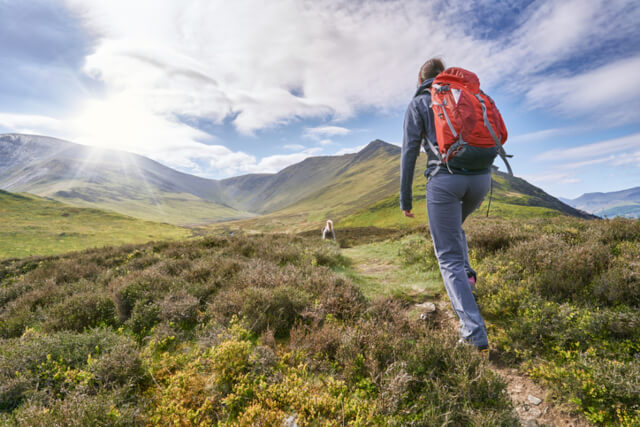
Sitting at 931 metres, Skiddaw is the sixth highest mountain in England. Just north of Keswick, this Lake District mountain offers a change of pace to visitors of the bustling market town.
Skiddaw is considered the “perfect mountain”, owing to the steep flanks and flowing gills that make up its smooth slopes.
Set apart from the majority of the mountains in the Lake District, you’re rewarded with magical views from its summit. Expect to see the rural delights of the Vale of Derwent.
The Jenkins Hill Path is the most popular route to follow. Starting in the heart of Keswick, you can make use of the local amenities to stock up on refreshments to help fuel your expedition!
The trail climbs Jenkins Hill, past Little Man and onto the summit ridge of Skiddaw. A short hike further, a summit cairn marks the top of the peak.
Be mindful to check the weather before your ascent, as snow and strong winds are likely at the top of this Lake District mountain.
Distance: 16.1km
Time: 5-6 hours
Height: 931 metres
Starting Point: Moot Hall Keswick
Route Details: Jenkin Hill Path
Seasonal Advice: Best climbed in late spring or early autumn, Skiddaw can be exposed to strong winds year-round, with low cloud often obscuring the path in winter.
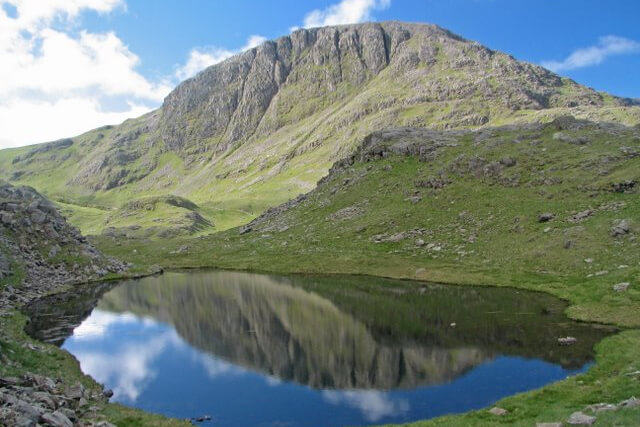
This Lake District mountain sits amongst the Scafell chain, in the most northern position.
Climbers of Great End typically use the mountain as a path leading to Scafell Pike, however, it is a rewarding hike in and of itself.
This impressive mountain towers over Sprinkling Tarn, reflecting a mirror-like image of the mountain in all its glory. Along with the glistening waters of the tarn, views from the top of the mountain stretch as far as Lake Windermere and the Langdale Pikes.
One of our favourite Great End walking routes begins at Seathwaite car park, passing through Seathwaite Farm and over the River Derwent.
A series of rocky steps and steep, craggy slopes make their way to the summit, where the East cairn marks the top of the peak.
Distance: 11.4km
Time: 6-7 hours
Height: 910 metres
Starting Point: Seathwaite Car Park
Route Details: Great End From Seathwaite Route
Seasonal Advice: Late spring or early summer provides the clearest and safest conditions, though snow lingers well into spring, especially on the north-facing gullies.
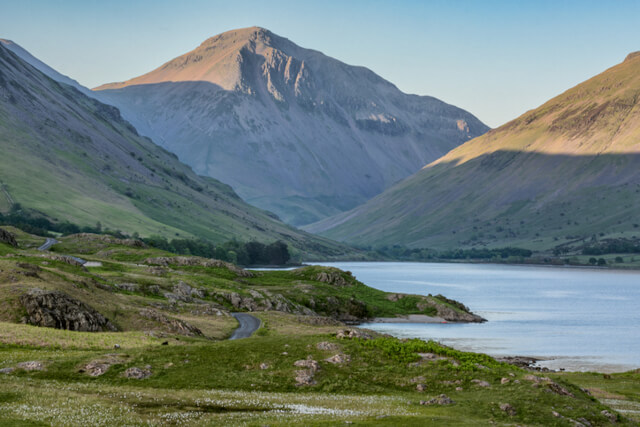
This popular Lake District mountain takes its name from its triangular, gable-like apperance from the direction of Wasdale.
Great Gable is situated between the pint-sized hamlets of Wasdale Head and Seathwaite, in the heart of the National Park.
A variation of trails wind their way to the summit, each more challenging than the last. The Breast Path is considered the easiest route to follow, with a belt of crags and stone-pitched slopes leading to the top.
Those looking for a more challenging hike may prefer the Great Gable Circular. Stetching over 16 kilometres, the route begins and ends at Honister Pass.
Those up for the challenge will ascend Fleetwith Pike, Haystacks, Kirk Fell, Great Gable, Green Gable, Brandreth and Grey Knotts along the way. Be sure to come prepared, as the Great Gable Circular route typically takes over 7 hours to complete.
Distance: 5km
Time: 2-3 hours
Height: 899 metres
Starting Point: Wasdale Head Green
Route Details: The Breast Path
Seasonal Advice: Great Gable is most enjoyable on clear summer days, as its rocky paths can become slippery and indistinct in wet or wintry weather.
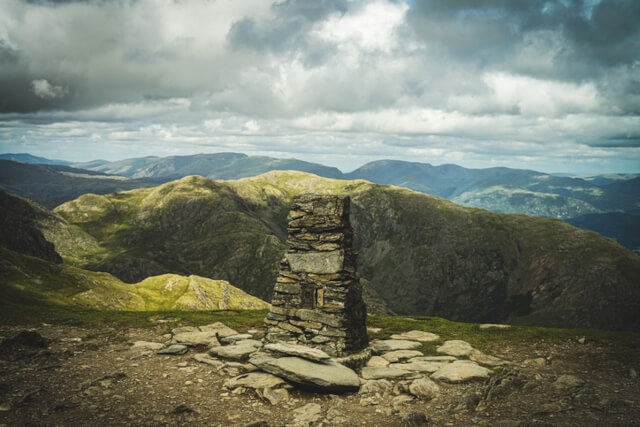
One of the highest fells in the Lake District, the Old Man of Coniston makes for a relatively challenging hike.
This Lake District mountain takes its name from the nearby town of Coniston and glistening lake of Coniston Water. The highest peak in the Furness Fells, the Old Man of Coniston is a much-loved outdoor adventure.
The hike begins at the pay-and-display car park located at the base of the fell before beginning the climb over Brown Pike.
Rugged, rocky terrain can be felt underfoot, with steep inclines in places along the way.
A tower of rocks are stacked at the summit, marking the highest point of the fell. From here, hikers are awarded with far-reaching views across the rolling countryside, stretching toward the Langale Pikes.
Distance: 6.2km
Time: 3- 4 hours
Height: 802 metres
Starting Point: Coniston Old Man & Coppermines Car Park
Route Details: The Old Man of Coniston Route
Seasonal Advice: Popular year-round, but best enjoyed in dry spring or summer weather, as the rocky inclines can become slick and difficult after rain or snow.
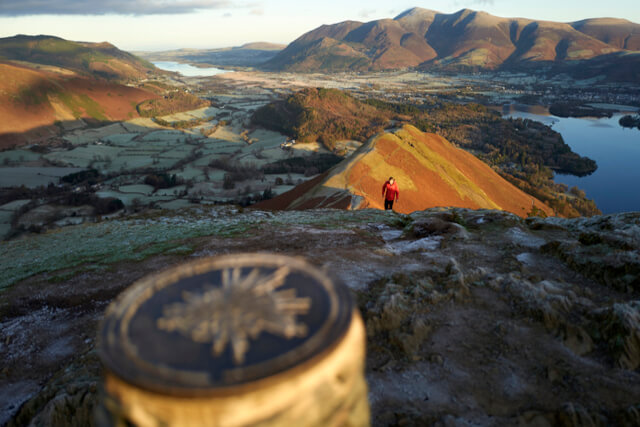
One of the shortest on our list of mountains in the Lake District, what Catbells lacks in height it makes up for in enjoyment.
Easy to climb and simple to navigate, most trails to the summit of this Lake District mountain are suitable for beginners.
The Catbells & Derwentwater Lakeshore trail is amongst the most popular walking routes. A scenic journey, the trail climbs to the summit of Catbells before looping back along the shores of Derwentwater.
Jaw-dropping views can be seen along every step of the way, providing a magical backdrop for a photo opportunity. See if you can identify the peaks of Skiddaw and Causey Pike!
This Lake District mountain is easy to reach, with the Keswick Launch traveling across Derwentwater to Hawes End Landing. This way you can experience the best of both land and water.
Distance: 5.7km
Time: 2-4 hours
Height: 451 metres
Starting Point: Hawes End Landing Stage
Route Details: Catbells & Derwentwater Lakeshore Route
Seasonal Advice: Catbells is ideal in spring or autumn when the trails are quieter and drier, though care should still be taken on the steep sections in winter frost.
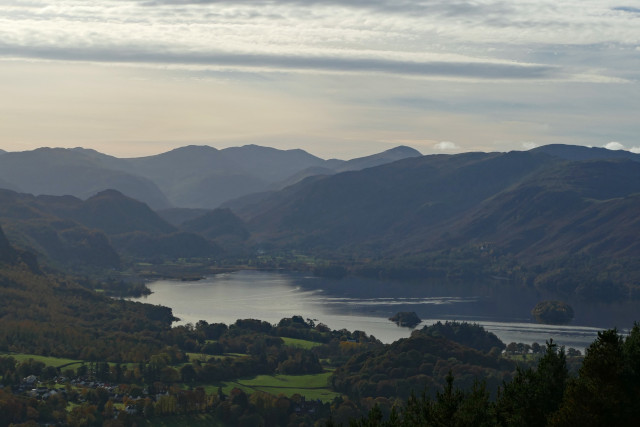
One of the most accessible fells in the Lake District, Latrigg makes for a short yet rewarding walk.
This modest hill sits just outside the market town of Keswick and is often considered a perfect introduction to the Northern Fells. Though small in stature, Latrigg offers big views with very little effort.
The route begins at the car park on Gale Road, where a gently sloping path leads directly to the summit.
Smooth underfoot and mostly level, the trail is popular with families, casual walkers and photographers alike.
A wooden bench sits near the summit, inviting walkers to pause and take in the sweeping views over Keswick, Derwentwater and the surrounding peaks.
Distance: 2.4 km
Time: 1-2 hours
Height: 368 metres
Starting Point: Gale Road Car Park, Keswick
Route Details: Latrigg from Keswick walking route
Seasonal Advice: Accessible in all seasons, though the clearest views over Derwentwater are best enjoyed on crisp autumn mornings or sunny spring afternoons.
The best time to go hiking in the Lake District is between late spring and early autumn, when the weather is more stable and paths are drier. Remember that warm and sunny conditions at the base can turn to cold, wet and windy conditions at the summit.
Winter walks can be rewarding but require experience, proper gear and caution due to snow, ice and limited daylight.
Sturdy walking boots are strongly recommended for most fells, especially those with rocky or steep terrain. Lower fells like Latrigg or Catbells may be manageable in good conditions with trail shoes, but boots are always safer.
Yes, dogs are welcome on most fells, but owners should keep them under control and on a lead near livestock. In hot weather, avoid strenuous climbs and always carry water for them.
Latrigg and Catbells are perfect for beginners, offering stunning views without too much climbing. Both have well-defined paths and can be completed in under two hours.
Wild camping is tolerated if done responsibly and discreetly, following the ‘leave no trace’ principle. Avoid busy routes, camp high and away from water sources, and take all rubbish with you.
Browse our wonderful collection of holiday cottages in the Lake District and book your ideal getaway!
If hiking is your kind of thing, give our ultimate guide to the Langdale Pikes a read ahead of your visit! And for more wonderful ways to spend your time, take a look at our guide on what’s on in Cumbria!
Images courtesy of : Ian Taylor – (CC BY-SA 2.0); K A – (CC BY-SA 2.0)